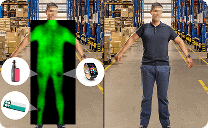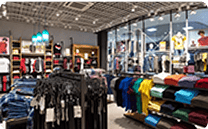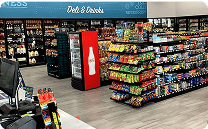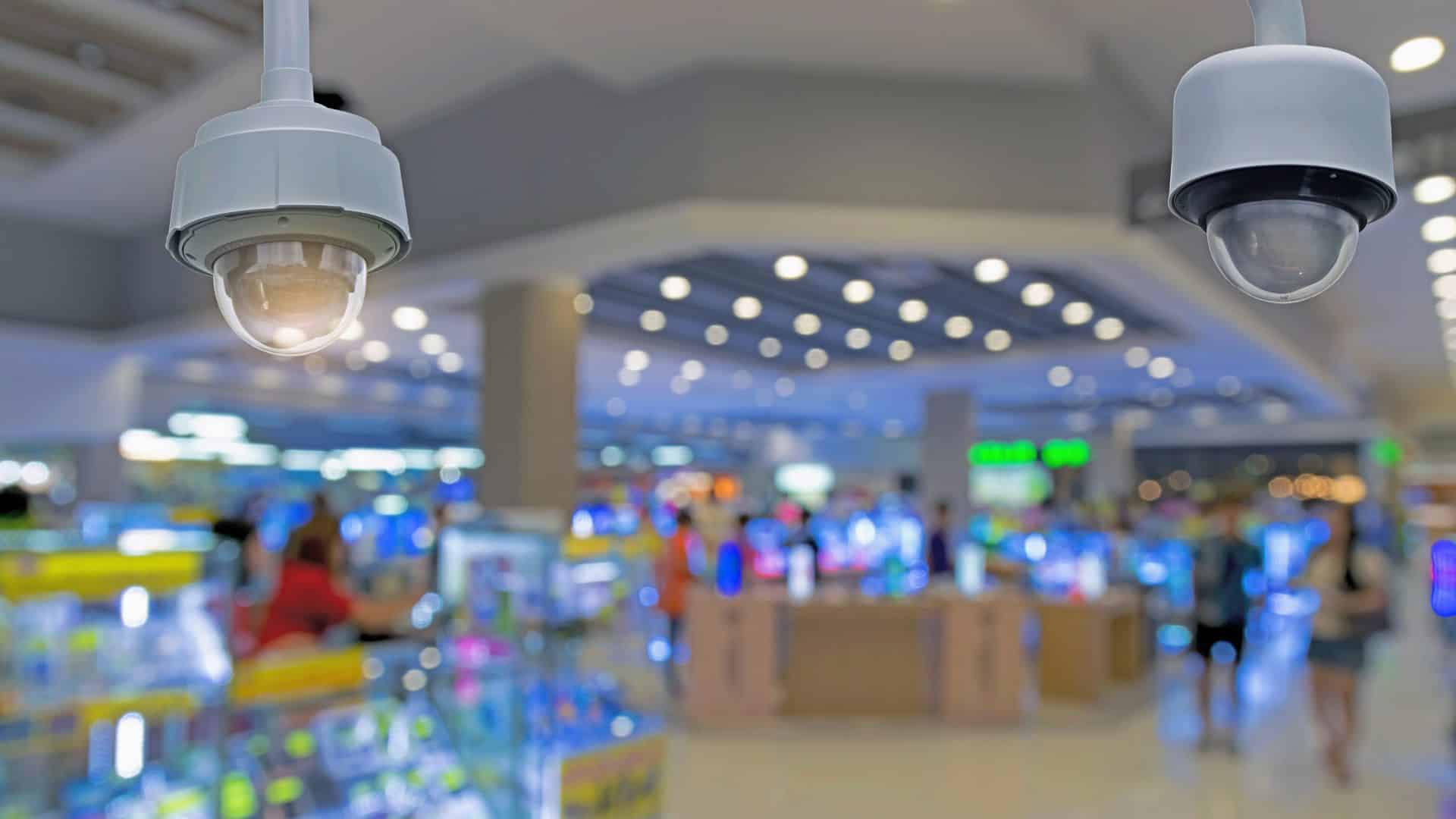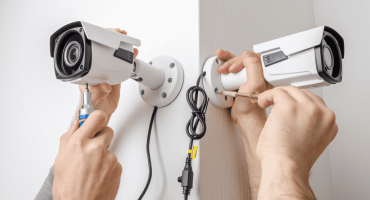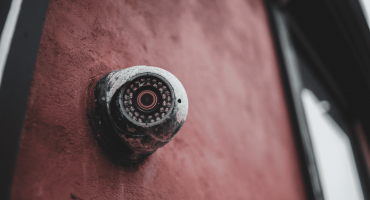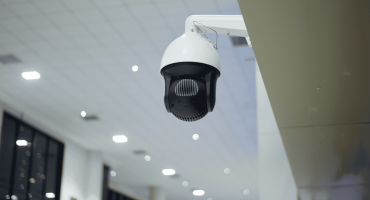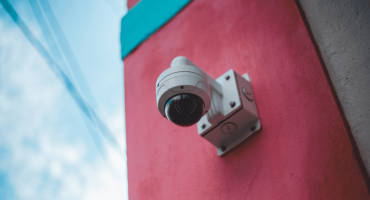In This article
More businesses are discovering the added value of 360-degree security cameras in a world that demands more effective security strategies. They provide a wider field of view with fewer blind spots. According to various research sources, the growing demand for these cameras is expected to drive the global market to exceed $20 billion by 2034.
What Are 360-Degree Security Cameras?
Often referred to as 360-view security cameras and 360-degree surveillance cameras, their enhanced viewing capabilities primarily distinguish them.
Other distinguishing features:
- More viewing angles.
- A single camera can do the job of several older cameras.
- Virtual Reality (VR) and Augmented Reality (AR) immersive content.
- Multiple lenses and digital editing options.
- Compatible with the most advanced security systems.
How do 360-Degree Security Cameras Work?
Like all security cameras, 360-degree security cameras provide a view, but it is their wider field of view, excellent video quality, and additional enhancements that drive a growing demand for them.
- Equipped with two or more lenses, often a fisheye lens for a 360-degree view.
- Software converts or stitches the spherical image into a rectangular view.
- Capable of providing a panoramic view or a single image of all the camera captures.
- AI-enhanced video processing improves and automates many monitoring tasks.
Types of 360-Degree Security Cameras
Businesses can choose from many types of cameras that fit their budgets, address unique security needs, and make the entire security process more manageable.
- Two-lens cameras: Each lens is on the opposite side to show a 360-degree view.
- Multi-lens cameras: Provide higher-resolution and stereoscopic views to see more details.
- Fisheye cameras: Capture a wide-angle view and digitally dewarps it to eliminate distortion.
- PTZ (Pan-Tilt-Zoom) cameras: Remotely adjust the camera’s direction to track potential security targets and situations.
- AI-powered cameras: Improved object and facial recognition, and smart analytics.
Benefits of Using 360-Degree Security Cameras
Businesses that invest in 360-degree view security cameras demonstrate a proactive approach to security. The cameras’ many benefits will help businesses achieve that goal and many others.
- Advanced features recognize and detect faces, objects, and crowds.
- Better monitoring to reduce false alarms and recognize and categorize objects.
- AI technology identifies real-time threats and unusual activities.
- Deliver a long-term ROI.
- More automated monitoring capabilities and quicker incident response.
Key Features to Look for in a 360-Degree Security Camera
When businesses of any size need improved security with new technologies to combat increasingly sophisticated criminals, 360-degree security cameras offer all the features necessary to win that battle. Look for these:
- A variety of camera/lens configurations for basic and complex security needs.
- High-resolution 4K and HD video for sharper images and better identification.
- Infrared and thermal capabilities for night-vision surveillance and clearer views in low light.
- Motion detection and positive person/pet recognition to reduce false detection alerts.
- AI technology for smart tracking and more actionable data and analysis.
- Data storage and retrieval from on-site devices and the cloud.
Top Use Cases for 360-Degree Security Cameras
The many uses of 360-degree security cameras are a primary benefit of choosing them for almost every type of security application. Whether installed as 360-degree outdoor or 360-degree indoor surveillance cameras, they can help businesses of any size be better protected.
Find your use:
- Retail stores: Identify and deter shoplifters and monitor customer activities.
- Large businesses: Monitor large staff, visitors, suppliers, contractors, and inventory.
- Corporate campuses: Access points, traffic, parking lots, and perimeters.
- Warehouses and factories: Surveillance of aisles, isolated spaces, inventory, machinery, and employee activity.
- Entertainment venues: Stadiums, arenas, theaters, and clubs.
- Public spaces and Smart City applications: Parks, squares, commons, and playgrounds.
Installation and Maintenance Guide
Whether 360-degree CCTV security cameras are installed at a small or large business, facility, or venue, efficient installation and comprehensive camera coverage begin with a plan. Any installation plan includes camera placement, wiring, integration with monitoring hardware, and other components of the overall security system, as well as a maintenance schedule.
Primary installation steps:
- Determine the best locations for entry points, windows, exterior areas, points of transaction, employee areas, the backroom, and offices.
- Position near an accessible power source.
- Place it at the most effective height from the floor and the best viewing angle.
- Avoid nearby light sources.
- Connect to an appropriate network, monitoring, and other equipment.
Primary maintenance steps:
- Clean lenses and camera covers; use only a microfiber cloth and an appropriate lens cleaner.
- Physical examination: check for camera damage, cover, and inspect the camera mount.
- Check cables and points of connection for corrosion, frayed, or split wiring.
- Check for and update software and firmware with the latest versions.
- Check for any new obstructions, including plant growth.
- Professional maintenance may be the best option for an extensive array of security cameras at large businesses
Common Challenges with 360-Degree Security Cameras and Their Solutions
360-degree view security cameras are excellent choices for many businesses, but they can create challenges for effective use and an appropriate ROI.
- Wide-angle video images can distort or warp, making it more challenging to identify individuals and accurately document incidents. Dewarping software is the solution for a standard panoramic view.
- Cameras and networks with advanced technologies have more hardware and software components, requiring a well-developed and consistent maintenance program, as well as professional advice.
- Wi-Fi or Ethernet connections can be disrupted, resulting in connectivity issues. These should be tested regularly.
- Video recordings are generally large files, and inadequate storage may limit access. The solution combines local storage of current files and cloud storage for archiving.
Future Trends in 360-Degree Security Cameras
All of today’s technologies, including security cameras, constantly evolve, adding new features and improving performance.
- AI and machine learning will remain integral, particularly in video imaging, recognition and identification, automation for smarter threat detection, and data analysis.
- 5G technology is expected to have the same positive effects as it has on smartphones and other devices. Video data transmission will be quicker and more reliable and provide real-time analysis.
- Edge computing, or processing video data on the camera instead of in the cloud, reduces latency and increases the speed of the entire security process.
- Future cameras will address privacy concerns by using various technologies, such as encryption, to secure sensitive data.
Conclusion
360-degree security cameras offer versatility, high-quality imaging, and advanced technologies, making them ideal for any business seeking to enhance its security. Their wide-angle coverage, elimination of blind spots, multiple lens options, and other critical features are driving the significant increase in global demand for 360-degree security cameras every year.
Because these cameras offer a wide range of features that businesses need for 21st-century security, they can serve a diverse set of applications, including retail stores, large businesses, corporate campuses, warehouses, entertainment venues, public spaces, and homes.
360-degree surveillance cameras benefit both business owners and homeowners. However, to achieve a higher level of security, everyone is encouraged to select the right security solution after carefully considering their needs. To learn more about DTiQ’s security solutions, visit our website.
Frequently Asked Questions
How do 360-degree security cameras compare to traditional security cameras?
The most important differences are image quality and a wide-angle view. Additionally, 360-degree security cameras offer more advanced features to enhance security, automate various tasks, and deliver an excellent return on investment (ROI).
Are 360-degree cameras suitable for outdoor use?
Yes, they are designed to withstand seasonal temperatures and precipitation, featuring stronger cases and weatherproofing that surpasses that of indoor cameras. Store exteriors, corporate campuses, and outdoor entertainment and event venues will benefit the most from outdoor security cameras.
Do these cameras require professional installation?
In most cases, professional installation is preferred. It ensures proper placement, high-quality power and network connectivity, testing, and employee training. Most businesses, even those with a security team, have limited knowledge of security cameras, so they can choose the best for each application and install them. Professional installation may include a maintenance contract.
What’s the best storage option for 360-degree security footage?
Storage hardware and software must be compatible with 360-degree security cameras and the footage they record. Network Video Recorders (NVRs) and Digital Video Recorders (DVRs) are the primary options, depending on the type of security camera. While DVRs are sufficient for analog security cameras, NVRs are the preferred choice for digital IP cameras, as they deliver better image quality. Cloud storage is the other primary option and may be necessary for large businesses that generate massive amounts of video data.
